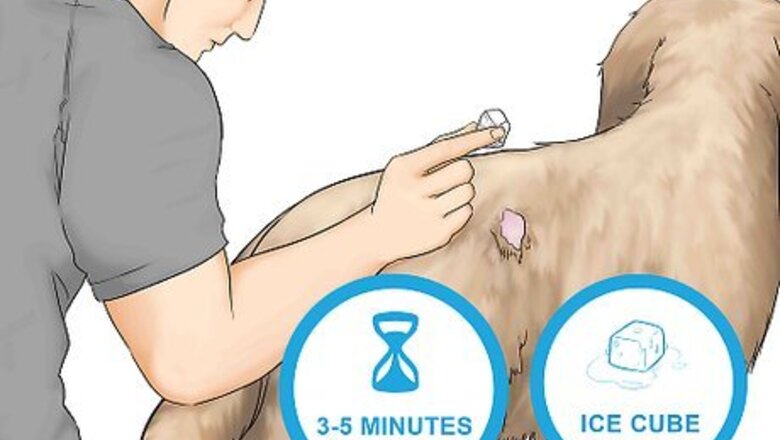
views
Using an Ice Cube
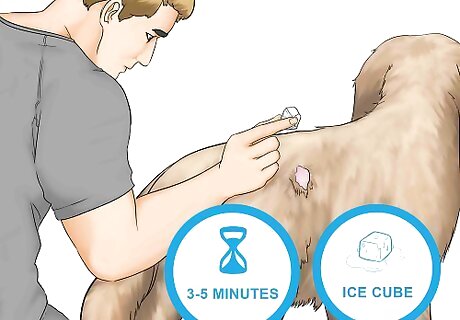
Hold an ice cube against the gum for 3-5 mins to harden it. If you can, alternate holding the ice cube on either side of the gum to harden it on both sides. Gum is usually easier to remove if it's hard. Ice can freeze and harden the gum so that you can pull it out of the dog's fur. If the gum becomes soft again while you're trying to remove it, stop and hold the ice against it again.
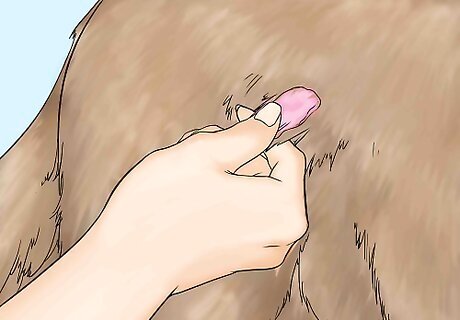
Use your fingers to break off pieces of the hardened gum. Gently pull the gum out of your dog's fur. It's easiest to bend and break the hardened gum, picking it out in small pieces. Go slowly so that you don't hurt the dog. If you can't get the gum out, you'll need to try a new method of removing the gum, such as applying an oil.
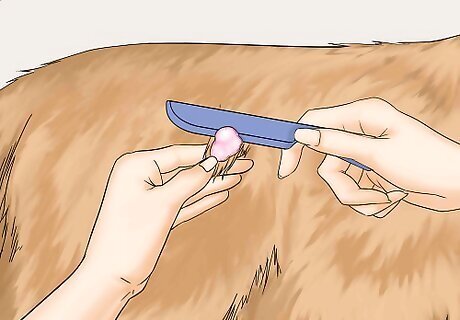
Scrape the gum off the fur with a plastic knife for an easier option. If you have a plastic knife, you can rub it against the hardened gum to pull it free. Make short, gentle motions with the plastic knife to slowly pull out the gum. Don't rush, as you could poke the dog or pull its fur. Don't use a regular knife to scrape the fur, which could accidentally cut the dog.

Bathe your dog to remove any remaining gum. Wet the dog, then work a dog shampoo into its fur. Then, rinse the dog thoroughly to remove all of the shampoo. Finally, use a warm, dry towel to dry off the dog. Don't use people shampoo on your dog because it can disrupt the dog's pH. This can make your dog vulnerable to skin issues caused by bacteria, viruses, or mites.
Applying an Oil

Apply peanut butter, olive oil, butter, or mayonnaise to the gum. Use your fingers to work the oily substance into the fur around the gum. Make sure the affected area is completely covered. If your dog licks off some of the peanut butter, it's okay, as long as you use a peanut butter that doesn't contain xylitol. Dogs can eat other oils, as well. However, try to keep your dog from licking at the oil, as they may get diarrhea or suffer from pancreatitis if they consume too much.

Allow the oily substance to sit on the gum for at least 3 minutes. This gives it time to soak into the gum, loosening it. Sit with your dog so you can make sure it doesn't snack on the oily substance or the gum. Keep the chewed gum out of the dog's mouth. Sugar-free gum is harmful to dogs because it contains xylitol. Although regular gum is usually harmless to dogs, it's best to play it safe.
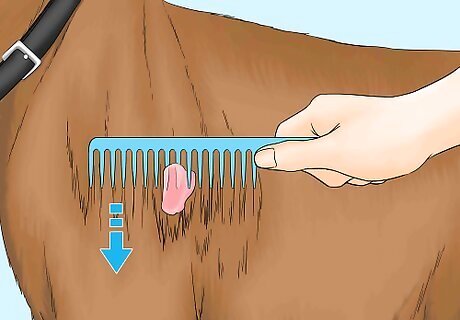
Comb through the dog's fur to remove the gum. Insert the teeth of the comb down into the fur just above the gum. Then, pull the comb down through the fur to dislodge the gum. If the gum doesn't come out easily, apply more oil. You can also pick the gum out with your fingers. If there is still gum caught on your dog's fur, you may need to apply more peanut butter, olive oil, butter, or mayonnaise. If 2 to 3 applications don't work, you may need to trim the dog's fur.
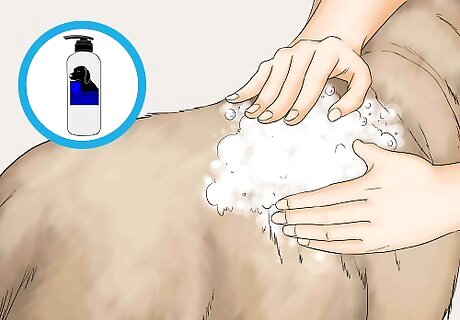
Shampoo your dog to remove the oil and any remaining gum. Rub dog shampoo into the pup's fur, working it into the affected area. Then, rinse your dog thoroughly to remove any remaining soap. Dry your pup with a clean, dry towel. Use a degreasing shampoo, if possible. It will more easily remove the oil. As an alternative, wash the affected area with dish soap before you wash the dog.
Cutting the Dog's Fur

Trim the fur when it's dry. It's easiest to cut a dog's fur when it's dry. If your dog's fur is wet, give it time to dry or use a hair dryer to dry the fur. If you use a hair dryer, set it on warm and don't aim it at one spot for more than a few seconds. Otherwise, you might burn the dog.

Hold your dog in place so you can safely trim its fur. Your dog may flinch while you're trying to cut out the gum. Gently hold the dog in your lap or in front of you with your hand under the dog to keep it from wiggling away. Speak to the dog in a calm, soothing voice to help it relax. If you have someone who can help you, ask them to hold the dog while you trim the fur. They can hold the dog on either side so it's harder for the dog to run away.
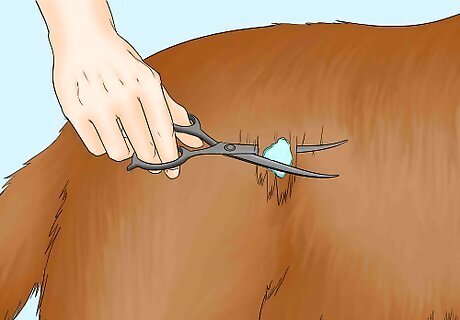
Use pet clippers to safely trim the gum from your dog's fur. Place the clippers above the gum stuck in your dog's fur. Move the clippers in a downward motion in the direction of your dog's fur growth. If you don't get all of the gum on the first pass, return your clippers to the spot above the gum, then make another pass. Keep trimming until all of the gum is gone. Always cut in the direction of the fur growth, which will grow in a downward direction. Don't try to go up under the gum, as this will make your job harder and leave your dog's coat looking very uneven. Don't use scissors to cut your dog's fur. It's very easy to slip and accidentally cut your dog.

Bring your dog to a groomer or vet if you're afraid to clip its fur. If you're inexperienced in trimming your dog's fur or the dog is moving a lot, it may be best to ask a professional to remove the gum. Don't risk hurting or scaring your dog if you aren't confident you can safely trim it. A groomer or vet can quickly trim the fur for you. If you're concerned your dog will chew on the gum before you can get it into the groomer, put a pet cone around its head.
Getting Gum Off a Paw
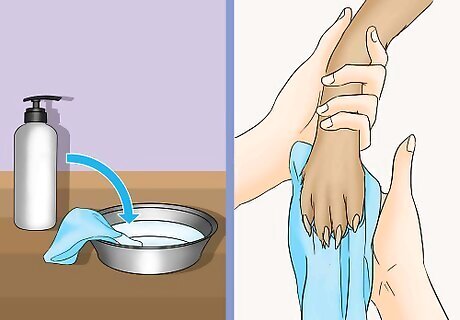
Dab the dog's paw with a rag soaked in dishwashing detergent. Mix dishwashing detergent into a bowl of warm water. Dip a rag into the soapy water, then pat the paw with the rag. Once the paw becomes wet, gently wipe the gum to see if it comes off. If the gum doesn't come off, try applying an oil. Don't pull at the gum, as this can hurt your dog.
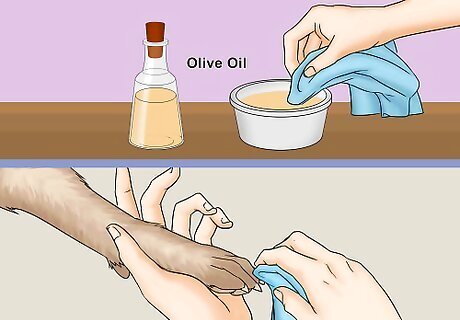
Apply olive oil to the paw with a rag if the gum is still there. Dip another rag in the olive oil, then wipe the oil onto the dog's paw. Use the rag to lightly pick at the gum, trying to remove it. Avoid pulling at the gum. Move in a sideways motion to try to shift it off of the dog's paw. As an alternative, you can use an oil-based salad dressing to loosen the gum.
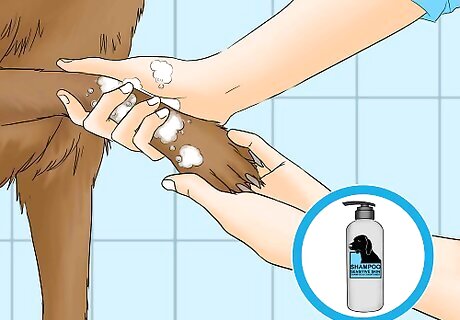
Wash and dry the dog's paw once the gum is removed. Don't allow your dog to lick away any soap or oil. Use dog shampoo to wash the dog's paw, then rinse it thoroughly. Use a clean, dry towel to pat the dog's paw dry. If you use the oil on your dog, use a degreasing shampoo or wash the paw with dishwashing soap for best results.
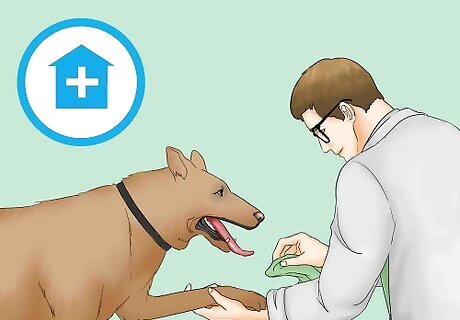
Take your dog to the vet if soap and oil don't remove the gum. The skin on your dog's paws is very sensitive, so don't risk damaging it. If wiping the dishwashing detergent or oil onto your dog's paws doesn't loosen it, your vet is the best option. If your dog is fighting you when you attempt to remove the gum, go ahead and call the vet. Don't risk hurting your dog. As an alternative, your pet groomer may be able to help you remove the gum.













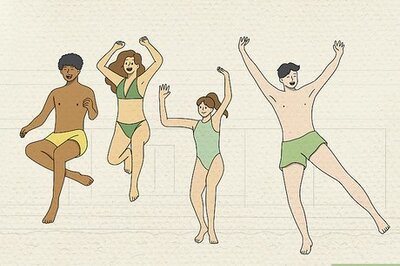

Comments
0 comment